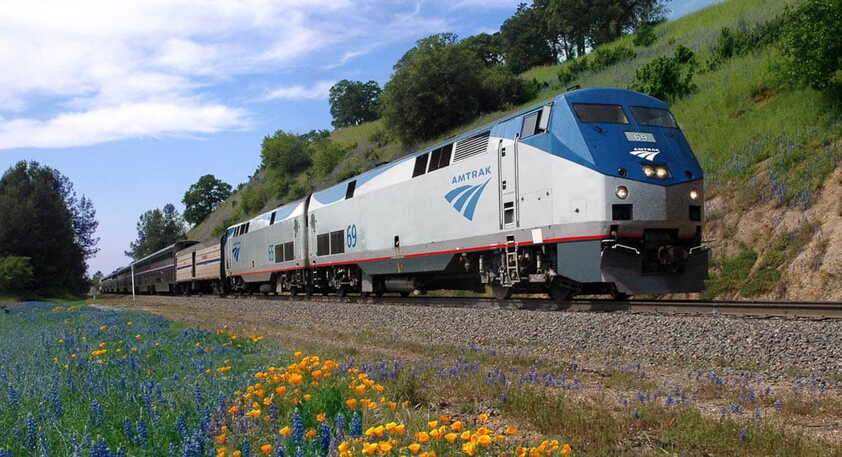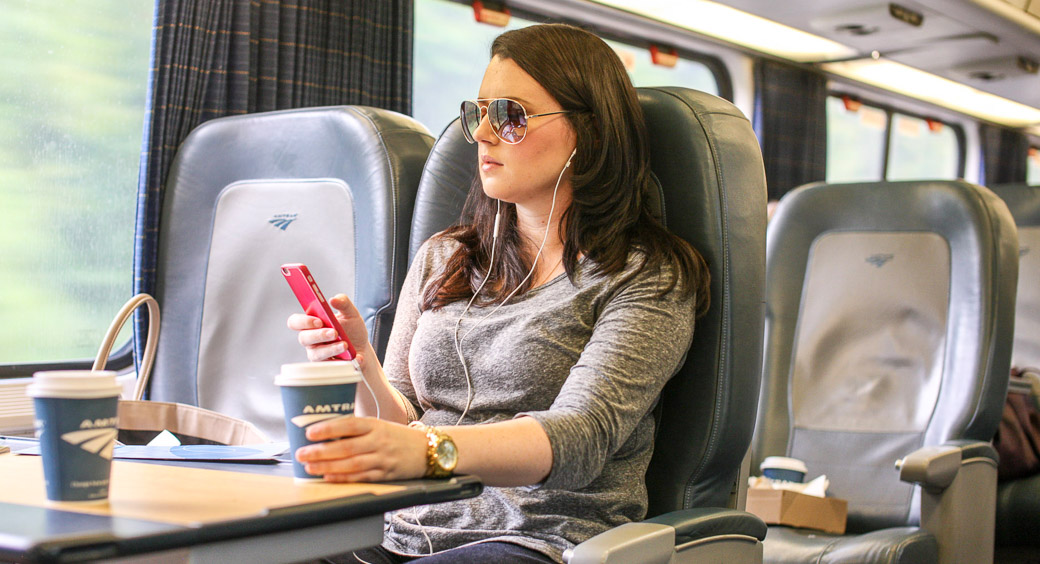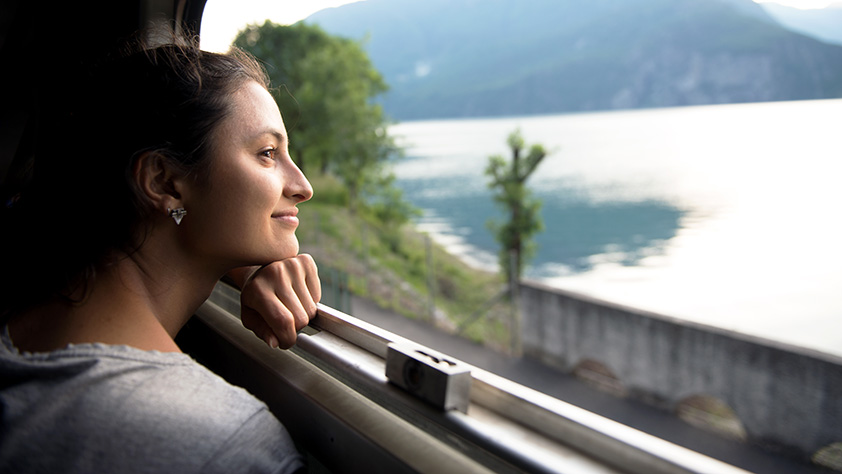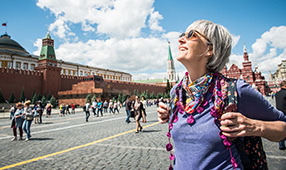Whether you’re on the Amtrak Cardinal (every Amtrak route has a name) that takes a meandering scenic route from New York to Chicago through the Shenandoah Valley and over the Blue Ridge Mountains, or you’re crossing the Sierras over Donner Pass on the Amtrak Zephyr from Chicago to San Francisco, you’re in for a memorable ride. From big city blocks to waving plains to coastal routes, you’ll see everything America has to offer from the window of a train.

Photo courtesy of Phil Gosney/Amtrak
The major benefit of taking a train is to enjoy the scenery as it passes by. That’s the real draw. Of course, like with any other type of transportation, there can sometimes be delays. But, when they happen on a train, you often have a gorgeous vista to accompany it. You’ll remember that panorama long after the trip is over. Photo courtesy of Phil Gosney/Amtrak
1. Plan ahead
First and foremost, Loomis suggests that you plan any train trip at least a month in advance. Amtrak’s ticket prices fluctuate based on availability. In general, there are more seats left far in advance of an embarkation date so your fare will be less expensive.
2. Book a sleeper car
If you’re traveling overnight, reserve a roomette, which accommodates up to two people, or a bedroom (for up to three adults). This can make the difference between getting a good night’s sleep—or not. In a roomette or bedroom, an attendant will transform your seat into a bed at night. A bedroom includes an in-room toilet, shower and sofa. Sleeper accommodations cost more than a regular seat (prices vary), “but the surcharge for this amenity isn’t as much as it first appears because meals are included,” Loomis says.
Breakfast, lunch and dinner for two are included in the train fare for sleeper accommodations from Chicago to Los Angeles. That’s a real savings from paying for each meal out of pocket. However, don’t forget to tip your room attendant. “As a rule of thumb, bring enough cash to tip $5 per night per person,” Loomis says.

Photo courtesy of Amtrak
3. Turn your seat into a cocoon
If you want to travel as cheaply as possible, buy a seat instead of a car and make it cozy. “Make it comfortable by bringing blankets, neck pillows, comfy shoes, snacks and ear buds for listening to music and watching videos,” says Lisa Bates, author of “Beyond the Rails” and founder of CrossCountryTrainTravel.com. To save even more money, bring your own cooler full of food.
4. Get an Amtrak USA rail pass
For long multi-destination trips, a rail pass is the way to go, Bates says. For just $459, you can travel for 15 days on Amtrak and get off the train at up to eight different stations along the way. Thirty- and 45-day USA rail passes are also available and allow you to get on/off the train 12 and 18 times, respectively. You can also upgrade a basic rail pass ticket to a sleeping car, but Bates doesn’t always bother. With a U.S. rail pass, you don’t have to travel continuously. You can spend time in different cities and hotels along your route.
5. Plan for delays
Amtrak trains are often waylaid, but there’s a valid reason: Amtrak runs on track owned by freight railroads and the freight trains have the right of way. Consequently, Amtrak trains often have to wait for freight trains to pass. Accidents, bad weather and natural disasters can slow things down, too. “My daughter and I experienced an eight-hour delay on Amtrak because we got caught in a California mudslide,” Bates says. Your best bet?
Keep your itinerary loose. For example, Loomis avoids having to make train connections. “If the Lake Shore Limited arrives in Chicago at 9:30 a.m. and I could connect to the Southwest Chief at 2 p.m., I don’t chance it,” he says. “I stay overnight and catch the first train the next morning.” Planning for delays actually helps you see more of the route in-depth—especially if you decide to overnight in a city you’ve never visited before.

Photo courtesy of Amtrak
6. Try the dining car
Whether the price is included in your fare or you’re paying à la carte, “food in the dining car is great,” Bates says. The menu features eggs, omelets and French toast for breakfast; salads and sandwiches for lunch; and steak, seafood and chicken for dinner. It’s worth the splurge.
Also, you never know whom you’re going to meet. “In the dining car on long-distance trains, you’re seated at a table with other folks,” Loomis says. “The interesting conversations I’ve had are one of the fascinating aspects of train travel that I enjoy as much as seeing the country.”












